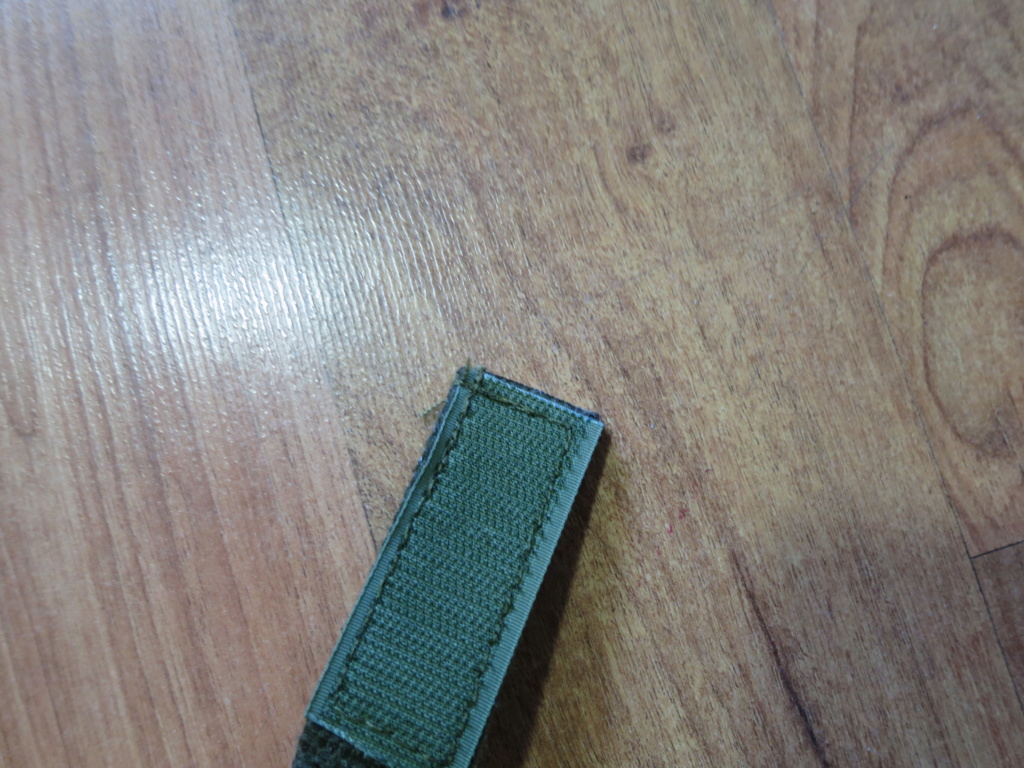Hello,
Earlier I posted photos of two different styles of 51 Pattern L straps. I suggested that the darker webbing material was nylon as the ends of the straps appear to have been heat sealed.
Since this set of L straps was of two piece construction, I thought it must have been replaced by the other style of L strap to make manufacture simpler.
I noticed that I have two different sets of 64 Pattern Y braces of the same manufacture as the differing 51 Pattern L straps. The cotton duck webbing set wrap the velcro components around the ends of the webbing straps. The nylon set have the ends of the straps cut clean and heat sealed.
Well, duh moment.
Why would you replace nylon equipment with cotton duck webbing!
Notice the velcro wrapped around the end of the strap. In the second photo the end of the strap is cut cleanly and sealed.


So, my question is, when did Canadian manufacturers start using nylon in army equipment? My understanding is the C1 rucksacks were made of cotton duck webbing as nylon construction was not available at the time.
It would appear that nylon was introduced during the 51 Pattern manufacturing period.
And lastly, awhile ago I mentioned that there was a variation of the 51 Pattern webbing belt that was similar to the 64 Pattern belt.
I may have found one. There are only two sets of eyelets, there is a velcro strip down the middle of the belt close to the metal buckle. The hooks have been cut of the end of the belt. The buckle is still the same same and the keeper is the same. I will send a photo later.
Ian
Earlier I posted photos of two different styles of 51 Pattern L straps. I suggested that the darker webbing material was nylon as the ends of the straps appear to have been heat sealed.
Since this set of L straps was of two piece construction, I thought it must have been replaced by the other style of L strap to make manufacture simpler.
I noticed that I have two different sets of 64 Pattern Y braces of the same manufacture as the differing 51 Pattern L straps. The cotton duck webbing set wrap the velcro components around the ends of the webbing straps. The nylon set have the ends of the straps cut clean and heat sealed.
Well, duh moment.
Why would you replace nylon equipment with cotton duck webbing!
Notice the velcro wrapped around the end of the strap. In the second photo the end of the strap is cut cleanly and sealed.


So, my question is, when did Canadian manufacturers start using nylon in army equipment? My understanding is the C1 rucksacks were made of cotton duck webbing as nylon construction was not available at the time.
It would appear that nylon was introduced during the 51 Pattern manufacturing period.
And lastly, awhile ago I mentioned that there was a variation of the 51 Pattern webbing belt that was similar to the 64 Pattern belt.
I may have found one. There are only two sets of eyelets, there is a velcro strip down the middle of the belt close to the metal buckle. The hooks have been cut of the end of the belt. The buckle is still the same same and the keeper is the same. I will send a photo later.
Ian



